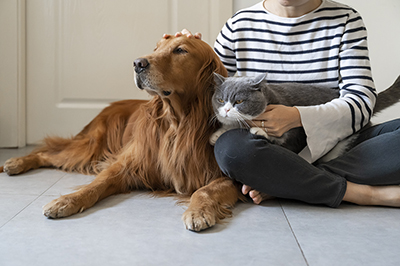Still Want to Insure Your Pet? Here’s How to Shop and Save
Last updated March 2022
Start with reviewing our cost estimates and consider plans that offer reasonably good deals in terms of total out-of-pocket costs. Because you can’t know whether your pet will need a lot or a little vet care over its life, focus your shopping on Odie and Trupanion, the insurers we identified as being the best deals among all our scenarios.
Carefully evaluate coverage and costs from plans before you buy. Here’s a rundown of what we learned:
 Cats cost less.
Cats cost less.
The average annual accident and illness pet insurance premium in 2020 was $342 for cats, which is considerably less than the $594 for dogs. But, as with Woof, buying insurance for Kitty was unlikely to save us money over his life when he suffered only a low level of health problems—and careful, deliberative cats tend to have fewer vet bills than rambunctious, impulsive dogs.
Make sure you understand what is and is not covered.
Pet insurance customers often complain to regulators that their claims were rejected for conditions or treatments that companies claim their policies do not cover. Most of the policies we examined do not cover preexisting conditions, and some conditions that are covered may be considered preexisting if they develop up to a year after you enroll. And, surprisingly, if your pet is ill or injured, the diagnostic exam is often not covered by many plans, even though the treatment itself is covered. Follow-up exams for that covered condition are often not covered either. Those $50 to $100 exam fees amount to a hidden added deductible.
Start early.
To avoid claim rejection for a preexisting condition, insure pets when they’re young and before they have the chance to develop preexisting conditions. You can typically enroll when your pet is six to eight weeks of age.
Wellness care coverage is a poor deal.
Much veterinary care consists of routine annual checkups, preventive care, and elective services not covered by accident and illness plans. You can typically add coverage for that, but doing so will make your total monthly premium even higher. Don’t insure against the risk of having to pay predictable costs that you can budget. Why pay an unnecessary middleman to cover its overhead and profits?
Consider accident-only policies.
These plans cover injuries but not illness and can be considerably less expensive. For example, ASPCA would charge us $50 a month to enroll Woof in its accident-only plan, a price that doesn’t increase with age. Compare that to ASPCA’s Complete Coverage accident and illness plan, in which monthly premiums rise from $71 at age two months to $228 at age 12.
Pick a high deductible and lower limits.
You’ll usually save considerably on premiums by increasing your deductible, reducing the percent reimbursed, and—if it’s an option—choosing an annual limit of only $5,000 or $10,000 instead of unlimited. Of course, doing so shifts more of the risk of loss to you by reducing or limiting your benefit payouts.
Ignore the marketing hype and make the right decision for you.
Don’t be swayed by the five-figure medical bills and huge insurance payouts claimed by companies. Those examples don’t include the high cost of premiums in their calculations, which makes insurance look like all purr and no hairballs. Carefully evaluate available coverage, how much it will cost you over your pet’s lifetime, and decide if it makes sense for your family.


